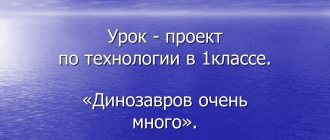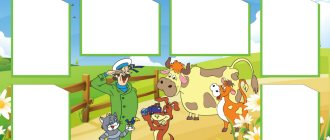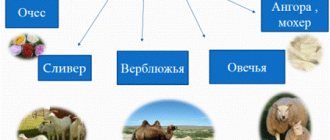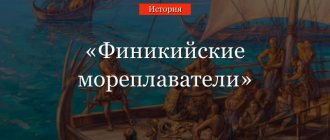Project “Unusual in the Ordinary” project on the surrounding world (junior, middle, senior group)
Municipal autonomous educational institution
"School No. 4 of the city of Belogorsk"
(preschool education)
Project “Unusual in the Ordinary”
Type of project: educational - creative.
Project participants: pupils of all groups, parents of pupils, preschool teachers, music director.
Implementation period: June-August 2020.
Relevance.
Look at what a beautiful, amazing world surrounds us: forests, fields, rivers, seas, mountains, sky, sun... This is nature. Our life is inseparable from it. Nature feeds, waters, and clothes us. She is generous and selfless. But our planet has many problems. And these problems are mainly caused by humans. The environment in the world is constantly deteriorating. The state of the environment is affected by harmful emissions into the atmosphere and waste discharges into water bodies. Nature is starting to get sick. But not only production is the cause of poor ecology. Many people throw garbage directly onto the street. In many places you can see scattered bottles, pieces of paper, various packages, anything at all. All this creates an unhealthy environment. To keep our home and environment clean and beautiful, we need to properly dispose of those things that become unnecessary.
Cultivating a creative attitude to work (the ability to see beauty in everyday things, experience a sense of joy from the work process, the desire to learn the secrets and laws of the universe, the ability to find a way out of difficult life situations) is one of the most difficult and interesting tasks of modern pedagogy.
Making crafts from waste materials promotes the development of creative abilities in preschoolers.
During such creative activity, the child creates useful and aesthetically significant objects and products to decorate everyday life (games, work, gifts for loved ones, recreation). In the process of making crafts from waste material, preschoolers, along with technical skills, develop the ability to analyze objects of the surrounding reality, form generalized ideas about the objects being created, develop independence of thinking, creativity, artistic taste, form valuable personality qualities (accuracy, determination, perseverance in achieving goals and etc.).
Problem: Where does the garbage come from? How does it affect the environment? How can you use it without increasing waste?
Determining the purpose of joint activities of adults and children to implement a project means finding out why we are carrying out it. We asked ourselves the following questions: “Where should we put the garbage? What to do with him? Why isn't the trash picked up? What happens to him in the future?
The problem identified in the project is not new. The slogan “Waste into income” is also well known to everyone. There was a time when school notebooks were labeled: “Made from recycled materials.” The children, seeing this, understood that the waste paper they collected was then processed into paper. Of course, this work needs to be resumed. Moreover, today the problem of garbage collection is especially relevant.
By raising children, we will also educate adults. Children, participating in the search for different ways to use plastic objects together with their parents, will not only discover and learn a lot (what plastic is, the properties and qualities of the material, what can be made from plastic, how to use invented objects in games), but will also interest adults, thereby involving them in the process of learning how to separate waste collection and use it rationally.
The goal of the project: to bring children to the understanding that waste material (garbage) can be used to create crafts, things (objects) useful to humans; promoting and strengthening the connection between preschool educational institutions and families.
Project objectives:
- Change children's attitudes towards garbage by showing how they can give a second life to waste material.
- To form in children an environmental and economic approach to municipal solid waste as a resource using the example of recycling.
- To acquaint preschool children with unconventional ways of using various materials, to develop interest in creative activities.
- To promote knowledge of the properties of the material and the desire to experiment with them.
- Develop children's creative imagination.
- To develop in preschoolers an interest in nature, a desire to actively learn and act with natural objects, taking into account the selectivity and preferences of children.
- To help parents familiarize themselves with the use of various non-traditional materials in creative activities; stimulate their joint creativity with children.
Expected results of the project:
Expected result for children:
- children will have a desire to experiment with waste materials;
- the ability to use tools and materials will develop;
- organization of creative exhibitions.
Expected result for parents:
- increasing the interest of parents in making crafts (objects) from waste material on the theme “Don’t throw it away - it will come in handy!”
Stages of the project:
Stage 1: Preparatory (1-2 weeks of June)
- Information-cumulative:
Preliminary work.
Formulation of the problem:
“What do we want to know?”
"Where can we find out?"
Studying the interest of children and parents to determine the goals of the project.
Collection and analysis of literature for adults and children.
2. Project development.
Conversations with parents and children.
Creation of a creative group (parents interested in this topic, educators).
Inform project participants of the importance of this problem. Get each participant interested in the topic of the project.
Study and analysis of scientific research methodological literature, Internet resources on this issue; selection of software and methodological support for this problem; selection of visual demonstration material.
Drawing up a work plan for the project.
Stage 2: Organizational and practical (3rd week of June – 3rd week of August)
Creation of conditions conducive to stimulating the development of creative abilities of children in the group.
Event topics:
1. “Garbage does not suit the Earth” (Conversations, didactic games “Good - Bad”, memorization of an excerpt from Y. Akim’s poem “There is one planet - a garden”, reading competition “Both adults and children are responsible for nature”)
2. “Miracles from candy wrappers” (Conversation “Is there a second life for candy wrappers”, theater “Dolls from candy wrappers”, exhibition “Fantasies from candy wrappers”)
3. “The second life of disposable tableware” (Conversation “Where did plastic come from?”, making crafts, creating a “Glass Theater”, musical toys)
4. “Hat Season” (Conversations on the topics: “Hats”, “What do people wear?”, “How quickly can you make a hat?”; writing stories “If I had an invisible hat”; inventing a fairy tale about a hat; teacher's story about the profession of a designer, fashion designer; asking riddles about hats; experimental games: “What is the crown of a hat for? (What will happen if the wind blows?)”; “What are the brims for? (What will happen if the sun shine in the eyes?)"; "Hat Ball")
5. “Paper World” (Research into the properties of paper; poems and riddles about paper; thematic conversation “Where did paper come from”; didactic game “What happens from paper”, making crafts from newspapers, toilet paper rolls, gift bags)
6. “What a surprise” (conversation “Kinder - a surprise gives joy!”; making crafts from Kinder surprise capsules; holding the “Let’s give a toy to kids” campaign)
7. “Magic boxes” (conversation “The second life of a box”; making crafts “Wonderful transformations of a cardboard box”)
8. “Amazing stones” (reading fairy tales, poems about stones; conversation “Stones and their properties”; didactic games “Describe the stone”, “What’s extra?”, “Mountain and pebbles”, “Find your stone”; laying out contour drawings pebbles; stone painting)
9. “Necessary from unnecessary for a healthy lifestyle” (together with parents, creating manuals from waste material for carrying out exercises to prevent postural disorders and flat feet)
10. “Souvenirs from CDs” (conversation “The Second Life of CDs”; making crafts)
Stage 3: Presentation - final (4th week of August)
Identifying knowledge gained during the project.
Conversations with children about the results of work during the project.
Exhibition on the theme “Don’t throw it away – it will come in handy!” with the participation of parents.
Report on the implementation and results of the work.
Stage 4: Control-reflective (5th week of August)
Summarizing.
Conversation “What did we want to know, what did we learn, why did we learn?”
Questioning of parents and teachers.
MAGAZINE Preschooler.RF
Project "Interesting Thing"Author and project manager, middle group teacher Nadezhda Sergeevna Prokopyeva
Components of project activities
- Project type: information-practice-oriented
- Type of project: group, long-term 3 months.
- Participants: children, parents, group teacher.
- Form of presentation: presentation and defense of the project
- Problem: How to use ordinary things for other purposes?
- Resources (information, material and technical, family resources (abilities and interests of family members)
Components of project activities
Relevance of the project:
During the observation of children's play, the groups noted that pupils use objects only for their intended purpose - this affects the development of play and research activities. Parents don't pay much attention to this.
Goal and objectives of project activities
Purpose: Children's
Exploring possible ways to use ordinary things in unusual ways.
Tasks:
- Find different ways to use one item.
- Gather information and ideas from various sources with the help of adults.
Goal and objectives of project activities
Goal: Pedagogical improvement of research collaboration between children and parents when studying the world around them.
Tasks:
- Create favorable conditions for expanding children's understanding of using ordinary things for other purposes than their intended purpose.
- Attract the attention of the pupils' families to experimentation.
- Support the initiative of children and parents when performing creative work.
Stage 1
Preparatory
- Formulation of the problem.
- Formulation of goals and objectives.
- Determining the content of the activity.
- Forecast of possible negative consequences in the implementation of the project
Stage 2
Basic
Teacher:
- Organization of project participants.
- Displaying a template with a ready-made research report on one subject.
Stage 2
2. Main
Methods of joint activities between children and adults:
- Searching for information from various sources: Internet resources, illustrations, creativity and family ideas,
examination of homemade toys from pre-school groups;
Games - exercises:
- “What does it look like?”,
- "If not, then…",
- “Detectives” , “Koloboks are investigating”, etc.;
Stage 2
2. Main
Joint activities between children and adults:
- Observing the personal example of adults;
- Experimenting at home with parents,
- Analysis of the obtained data with a photo report, presentation in the form of a presentation.
- Implementation of a joint project between a teacher and students’ families
23 children's projects on topics:
- plastic bottle,
- paper,
- pebbles,
- buttons,
- vinyl record,
- matches and matchbox,
- children's wooden chair,
- cardboard box,
- plastic kinder container,
- handkerchief,
- sticks,
- wax pencils,
- dough,
- Toothbrush,
- pillow,
- newspaper,
- cork,
- balloon,
- disposable spoon,
- blanket,
- paper napkins,
- peas,
- maple leaves.
Project effectiveness, stage 3
The final stage: preparation of a presentation of the results of the work by each child, defense of the project.
For children:
Using a template, without the help of adults, children select ways to use new items for other purposes.
Share impressions with peers about joint activities with parents.
In role-playing games, children use the acquired knowledge.
Album compiled: “Our discoveries”
Project effectiveness
For the teacher:
- The interest and activity of the families of the pupils (100% participation of the children of the group) in the joint project activities of the group increased, which influenced the achievement of excellent results of this project.
Thank you for your attention!
| Next > |



